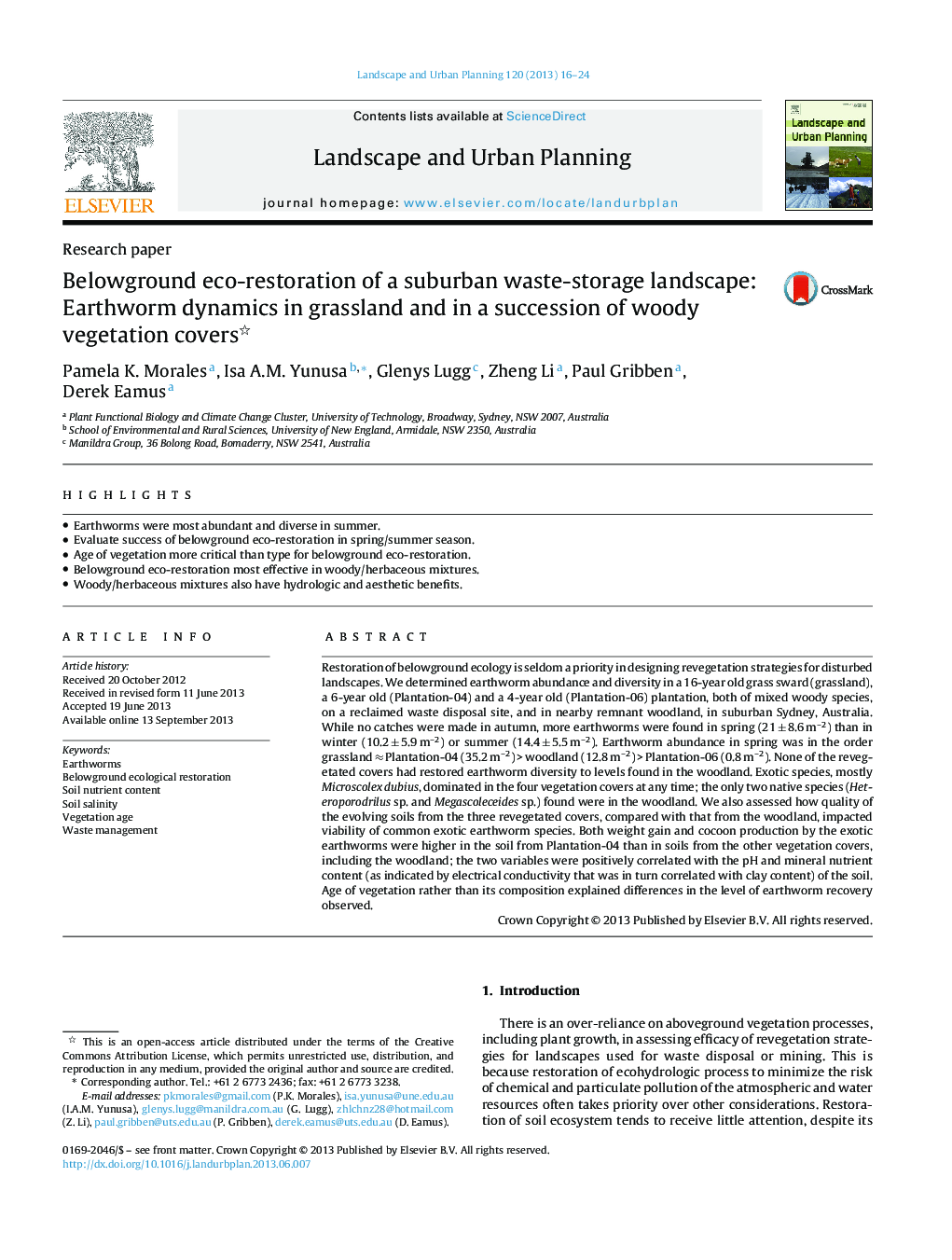| کد مقاله | کد نشریه | سال انتشار | مقاله انگلیسی | نسخه تمام متن |
|---|---|---|---|---|
| 7461748 | 1484638 | 2013 | 9 صفحه PDF | دانلود رایگان |
عنوان انگلیسی مقاله ISI
Belowground eco-restoration of a suburban waste-storage landscape: Earthworm dynamics in grassland and in a succession of woody vegetation covers
ترجمه فارسی عنوان
محیط زیست زیرزمینی محیط زیست پسزمینه حومه: دینامیک کرم خاکی در چمن زار و در جانشینی پوشش گیاهی چوب
دانلود مقاله + سفارش ترجمه
دانلود مقاله ISI انگلیسی
رایگان برای ایرانیان
کلمات کلیدی
کرم خاکی، بازسازی محیط زیست زیرزمینی، محتوای مواد مغذی خاک، شوری خاک، سن گیاه مدیریت زباله،
موضوعات مرتبط
علوم زیستی و بیوفناوری
علوم کشاورزی و بیولوژیک
بوم شناسی، تکامل، رفتار و سامانه شناسی
چکیده انگلیسی
Restoration of belowground ecology is seldom a priority in designing revegetation strategies for disturbed landscapes. We determined earthworm abundance and diversity in a 16-year old grass sward (grassland), a 6-year old (Plantation-04) and a 4-year old (Plantation-06) plantation, both of mixed woody species, on a reclaimed waste disposal site, and in nearby remnant woodland, in suburban Sydney, Australia. While no catches were made in autumn, more earthworms were found in spring (21 ± 8.6 m-2) than in winter (10.2 ± 5.9 m-2) or summer (14.4 ± 5.5 m-2). Earthworm abundance in spring was in the order grassland â Plantation-04 (35.2 m-2) > woodland (12.8 m-2) > Plantation-06 (0.8 m-2). None of the revegetated covers had restored earthworm diversity to levels found in the woodland. Exotic species, mostly Microscolex dubius, dominated in the four vegetation covers at any time; the only two native species (Heteroporodrilus sp. and Megascoleceides sp.) found were in the woodland. We also assessed how quality of the evolving soils from the three revegetated covers, compared with that from the woodland, impacted viability of common exotic earthworm species. Both weight gain and cocoon production by the exotic earthworms were higher in the soil from Plantation-04 than in soils from the other vegetation covers, including the woodland; the two variables were positively correlated with the pH and mineral nutrient content (as indicated by electrical conductivity that was in turn correlated with clay content) of the soil. Age of vegetation rather than its composition explained differences in the level of earthworm recovery observed.
ناشر
Database: Elsevier - ScienceDirect (ساینس دایرکت)
Journal: Landscape and Urban Planning - Volume 120, December 2013, Pages 16-24
Journal: Landscape and Urban Planning - Volume 120, December 2013, Pages 16-24
نویسندگان
Pamela K. Morales, Isa A.M. Yunusa, Glenys Lugg, Zheng Li, Paul Gribben, Derek Eamus,
